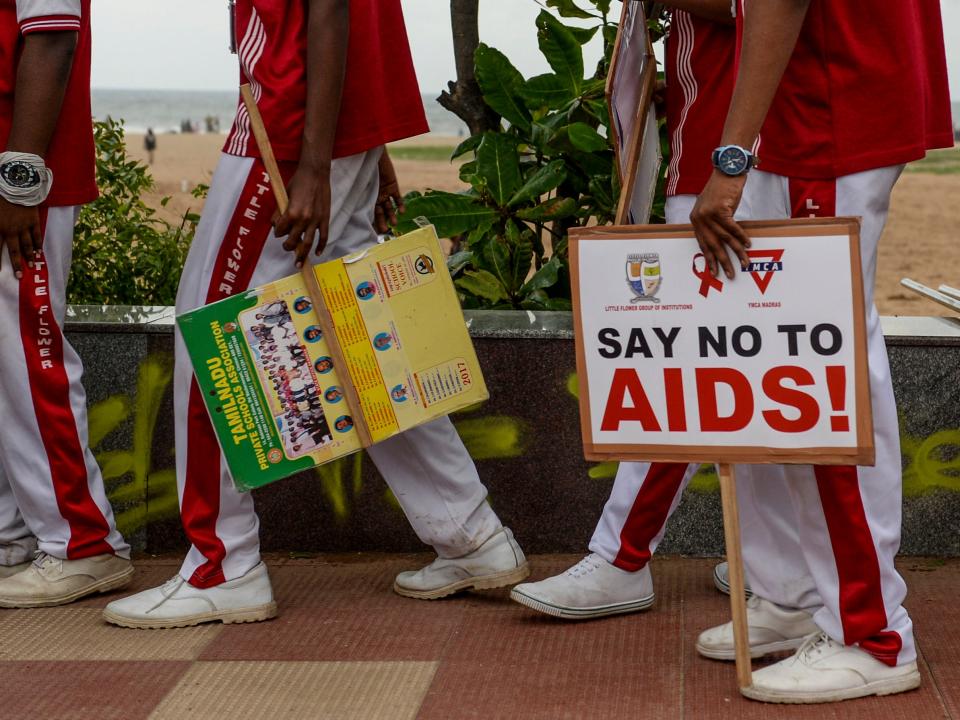A new diagnosis of HIV is made in children or adolescents every 100 seconds

Schoolchildren in Chennai take part in World Aids Day last year
(AFP via Getty Images)Approximately every 100 seconds, a child or young person under the age of 20 was newly infected with HIV last year, bringing the total number of children living with HIV to 2.8 million, Unicef said in a recent report.
The UN agency states that children are being “left behind” in the fight against HIV.
While prevention efforts and treatments for HIV are growing and becoming more available in some regions, many children across the world are unable to access HIV treatment, with Latin America and the Caribbean and west and central Africa shown to have the lowest rates of paediatric treatment for the virus.
In 2019, just under half of infected children worldwide did not have access to life-saving treatment, significantly lagging behind coverage for both mothers (85 per cent) and all adults living with HIV (62 per cent). Nearly 110,000 children died of Aids last year.
“Even as the world struggles in the midst of an ongoing global pandemic, hundreds of thousands of children continue to suffer the ravages of the HIV epidemic,” said Unicef executive director Henrietta Fore. “There is still no HIV vaccine. Children are still getting infected at alarming rates, and they are still dying from Aids. This was even before Covid-19 interrupted vital HIV treatment and prevention services putting countless more lives at risk.
“The Covid-19 crisis has further exacerbated inequities in access to life-saving HIV services for children, adolescents and pregnant mothers everywhere.”
In the months of April and May, coinciding with partial and full lockdowns, paediatric HIV treatment and viral load testing in children in some countries declined between 50 to 70 per cent, and new treatment initiation fell by 25 to 50 per cent.
Similarly, health facility deliveries and maternal treatment were also reported to have reduced by 20 to 60 per cent, maternal HIV testing and antiretroviral therapy (ART) initiation declined by 25 to 50 per cent, and infant testing services declined by approximately 10 per cent.
The data in the recent Unicef report, Reimagining a resilient HIV response for children, adolescents and pregnant women living with HIV, has found that 150,000 children aged 0-9 years were newly infected with HIV, bringing the total number of children in this age group living with HIV to 1.1 million.
Additionally, 170,000 adolescents aged 10-19 were newly infected with HIV, bringing the total number of adolescents living with HIV to 1.7 million.
The total number of Aids-related deaths of children and adolescents was 110,000 in 2019, this marks a slight decrease of 5 per cent from the 116,800 deaths in 2018.
Read More
Study finds long-acting shot helps women avoid HIV infection
Over 200 Australians in quarantine need HIV test after device mix-up

 Yahoo Finance
Yahoo Finance 